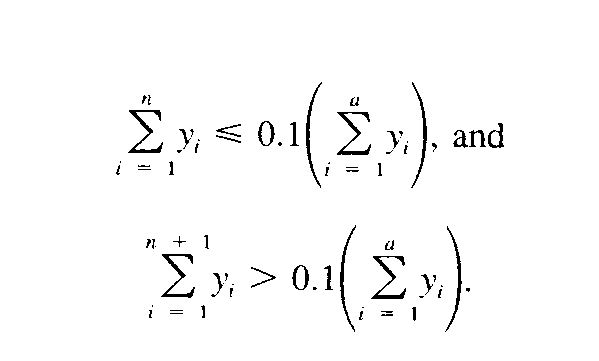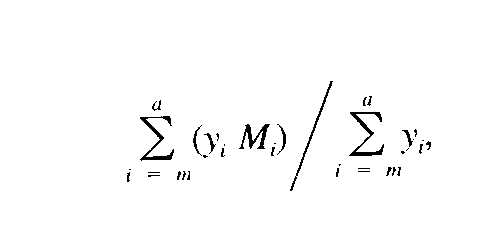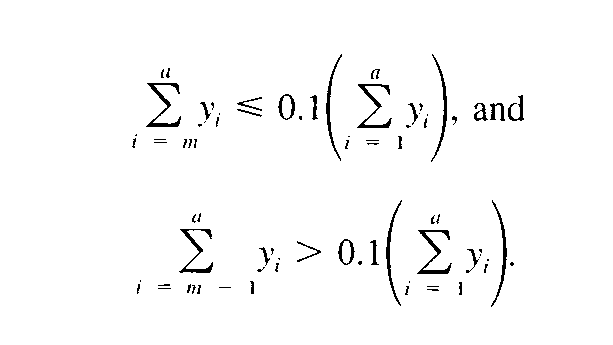Dextran 40
Dextrans.
Dextrans [9004-54-0].
»Dextran 40is derived by controlled hydrolysis and fractionation of polysaccharides elaborated by the fermentative action of certain strains of Leuconostoc mesenteroides(NRRL,B.512F;NCTC,10817)on a sucrose substrate.It is a glucose polymer in which the linkages between glucose units are almost entirely of the a-1:6type.Its weight average molecular weight is in the 35,000to 45,000range.
Packaging and storage—
Preserve in well-closed containers.Store at 25 ,excursions permitted between 15
,excursions permitted between 15 and 30
and 30 .
.
Labeling—
Where it is intended for use in preparing injectable dosage forms,the label states that it is sterile or must be subjected to further processing during the preparation of injectable dosage forms.
USP Reference standards á11ñ—
USP Dextran 40RS.USP Dextran 4Calibration RS.USP Dextran 10Calibration RS.USP Dextran 40Calibration RS.USP Dextran 70Calibration RS.USP Dextran 250Calibration RS.USP Dextran VoMarker RS.USP Dextran 40System Suitability RS.USP Endotoxin RS.
Color of solution—
The absorbance of a solution in water (1in 10),measured in a 4-cm cell determined at 375nm against a water blank,is not greater than 0.20.
Identification—
A:Infrared Absorption á197Kñ.
B:
Prepare four Test solutionsof Dextran 40in water,in such a manner that the concentrations are accurately known and approximately evenly distributed in the range of 2%to 0.5%.Using a capillary tube viscosimeter having dimensions such that the flow time of water is not less than 100seconds,measure the flow times of water and of the Test solutionat 20 .Calculate the viscosity numbers of each of the Test solutionsby the formula:
.Calculate the viscosity numbers of each of the Test solutionsby the formula:
{ln[(RD)(t/t0)]}/C,
in which RDis the ratio of the density of the individual Test solutionto that of water;tand t0are the flow times for the Test solutionand water,respectively;and Cis the concentration,in g per mL,of Dextran 40in the Test solution.Plot the viscosity numbers of each of the Test solutionsagainst their respective concentrations,and draw the straight line of best fit through the points and extrapolate to zero concentration:the value of the intercept is between 18and 23mLper g.
Specific rotation á781Sñ:
between +195 and +203
and +203 .
.
Test solution:
20mg per mL,heated,if necessary,on a water bath to dissolve.
Bacterial endotoxins á85ñ(where it is labeled as intended for use in the preparation of injectables)—
When tested in Sodium Chloride Injection (1in 10),it contains not more than 1.0USP Endotoxin Unit per mL.
Safety—
Inject intravenously 1.0mLof a sterile 1in 10solution of 10%Dextran 40in saline TSinto each of five mice weighing 18to 20g.The injection period is not less than 10seconds and not greater than 15seconds.If there are no deaths within 72hours,it meets the requirements of the test.If 1or more animals die,continue the test using 10mice weighing 20±0.5g.If all animals survive for 72hours,the requirements of the test are met.
pHá791ñ:
between 4.5and 7.0,in a solution (1in 10).
Loss on drying á731ñ—
Dry it at 105 for 5hours:it loses not more than 7.0%of its weight.
for 5hours:it loses not more than 7.0%of its weight.
Sulfate á221ñ—
A1.5-g portion shows no more sulfate than corresponds to 0.45mLof 0.020Nsulfuric acid (0.03%).
Heavy metals,Method IIá231ñ:
5µg per g.
Limit of nitrogenous impurities (where it is labeled as intended for use in the preparation of injectables)—
Sulfate solution—
To 1000mLof sulfuric acid add 5g of anhydrous cupric sulfate and 500g of potassium sulfate.Dissolve by heating,and store at 60 .[note—If storage at 60
.[note—If storage at 60 is not possible,prepare a smaller quantity of Sulfate solution on the day of use,adjusting the proportions accordingly.]
is not possible,prepare a smaller quantity of Sulfate solution on the day of use,adjusting the proportions accordingly.]
Indicator—
Dilute a mixture of 20mLof a 0.1%solution of bromocresol green in alcohol and 4mLof methyl red TSwith water to 100mL.
Procedure—
Transfer 0.2g,accurately weighed,to a micro-Kjeldahl flask.Add 4mLof Sulfate solution.Heat until the solution exhibits a clear green color and the sides of the flask are free from carbonaceous material.Cool,and transfer the solution to a steam distillation unit.Rinse the Kjeldahl flask three times with 5mLof water,adding the washings to the solution.Add 15mLof 45%sodium hydroxide solution,immediately close the distillation apparatus,and commence steam distillation without delay.Receive the distillate in 1mLof Indicatorin a 100-mLflask,keeping the end of the condensing tube below the liquid surface for 5minutes and above the liquid surface for 1minute.Upon completion of the distillation,remove the receiving flask,and rinse the end of the condensing tube with a small quantity of water,adding the rinse to the distillate.Titrate the distillate with 0.010Nhydrochloric acid until the color changes from blue to reddish violet.Perform a blank determination,and make any necessary correction.The corrected volume of 0.010Nhydrochloric acid titrated does not exceed 0.14mL(0.01%,as N).
Limit of alcohol and related impurities—
Test solution—
Dissolve without heating 5.0g in 100mLof water,and distill the solution,collecting the first 45mLof the distillate.Dilute the distillate with water to 50.0mL,and mix.
Standard solution—
To 25.0mLof the Test solutionadd 0.5mLof a 2.5%(w/v)solution of n-propyl alcohol.
Chromatographic system—
The gas chromatograph is equipped with a flame-ionization detector and contains a 2-mm ×1.8-m column packed with support S3.The column temperature is maintained at about 160 ,the injection port temperature is maintained at about 240
,the injection port temperature is maintained at about 240 ,and the detector is maintained at about 210
,and the detector is maintained at about 210 .The carrier gas is nitrogen,flowing at a rate of about 25mLper minute.[note—Injector seals may deteriorate after multiple injections of the Standard and Test solutions.Inspect the seals before making a series of injections.]
.The carrier gas is nitrogen,flowing at a rate of about 25mLper minute.[note—Injector seals may deteriorate after multiple injections of the Standard and Test solutions.Inspect the seals before making a series of injections.]
Procedure—
Separately inject equal volumes (about 1µL)of the Test solution,the Standard solution,and a 0.05%(w/v)solution of n-propyl alcohol and water,and measure the peak responses.After corrections for any impurities in the n-propyl alcohol solution and water,the total area of peaks from impurities in the Test solutiondoes not exceed the area of the n-propyl alcohol solution peak.
Antigenic impurities (where it is labeled as intended for use in the preparation of injectables)—
Prepare a sterile solution containing 100mg per mLin Sodium Chloride Injection.At intervals of about 48hours,inject three 0.5-mLdoses into the peritoneal cavities of each of 6guinea pigs.At 14days after the first intraperitoneal injection,inject 0.20mLintravenously into each of 3of the guinea pigs,and at 21days treat the other 3guinea pigs similarly.Observe the animals for 30minutes after each intravenous injection and again 24hours later.The animals exhibit no evidence of anaphylactoid reactions,such as coughing,bristling of hair,or respiratory distress.
Molecular weight distribution and weight and number average molecular weights—
Mobile phase—
Prepare a suitable degassed and filtered solution containing 7.1g of anhydrous sodium sulfate per Lin water.
Calibration solutions—
Separately dissolve USP Dextran 4Calibration RS,USP Dextran 10Calibration RS,USP Dextran 40Calibration RS,USP Dextran 70Calibration RS,and USP Dextran 250Calibration RSin Mobile phaseto obtain solutions each containing 20mg per mL.
Marker solution—
Prepare a solution in Mobile phasecontaining 3mg of dextrose and 3mg of USP Dextran VoMarker RSper mL.
System suitability solution—
Prepare a solution of USP Dextran 40System Suitability RSin Mobile phasecontaining 20mg per mL.
Test solution—
Prepare a solution of Dextran 40in Mobile phasecontaining 20mg per mL.
Chromatographic system (see Chromatography á621ñ)—
The liquid chromatograph is equipped with a refractive index detector and three 7.5-mm ×30-cm columns containing packing L38,and maintained at a constant temperature.Chromatograph the Marker solution,and record the peak responses as directed for Procedure:the elution profile shows two peaks,the first due to the Vomarker,the second due to dextrose.Determine the void volume,Vo,of the system as the inflection point of the ascending part of the first peak.Determine the total volume,VT,of the system as the maximum of the second peak;the tailing factor,t,of the dextrose peak is not more than 1.3;and the relative standard deviation of the ratio Vo/VTis not more than 1%.Chromatograph each of the Calibration solutionsseparately,and record the peak responses as directed for Procedure.Divide each profile into at least 60vertical sections of equal volume increments.(The actual number of sections is represented by the variable ain the equations below.)Record yi,the height above the baseline,corresponding to each value of vi,the volume eluted at that section.For each value of vi,calculate the distribution coefficient,Ki,by the formula:
(vi-Vo)/(VT-Vo).
Find appropriate values of b1,b2,b3,b4,and b5,using a suitable method,*that,when substituted in the equation:
and the resulting values ofMisubstituted,along with their corresponding values of yi,in the equation:
give values of weight average molecular weight,bar(M)w ,within 5%of the labeled values for each of the Calibration solutionsand 180±2for dextrose.Chromatograph the System suitability solution,and record the peak responses as directed for Procedure.Calculate bar(M)wof the total molecular weight distribution using the same method as directed for the Calibration solutions,but inserting the now known values of b1,b2,b3,b4,and b5.It is between 39,000and 46,000.
Similarly,calculate bar(M)wof the high-fraction dextran eluted through section nby the formula:
in which nis defined by the relations:
It is between 111,000and 135,000.
Similarly,calculate bar(M)wof the low-fraction dextran eluted in and after section mby the formula:
in which mis defined by:
It is between 6000and 9000.
Procedure—
Chromatograph a 50-µLvolume of the Test solution,and record the peak responses.Calculate values of the weight average molecular weight,bar(M)w ,of the total molecular weight distribution of the high-fraction dextran,and of the low-fraction dextran as directed for System Suitabilityunder Chromatography á621ñthe values are between 35,000and 45,000,not more than 120,000,and not less than 5,000,respectively.With the values of b1,b2,b3,b4,and b5,obtained with the Calibration solutionsunder Chromatographic system,calculate the number average molecular weight,bar(M)n,of the total molecular weight distribution of the Test solutionby substituting the corresponding values of Mi,along with their corresponding values of yi,in the equation:
The number average molecular weight,bar(M)n,is between 16,000and 30,000.Where Dextran 40is labeled as intended for use in the preparation of injectables,the ratio bar(M)w/bar(M)nis in the 1.4to 1.9range.
*
The Gauss-Newton method,modified by Hartley [see D.Hartley Technometrics,3(1961)],and the G.Nilsson and K.Nilsson method [see G.Nilsson and K.Nilsson J.Chromat.,101,137(1974)]are suitable methods.Acurve-fitting program capable of nonlinear regression may be used.
Auxiliary Information—
Staff Liaison:Radhakrishna S Tirumalai,Scientist
Expert Committee:(BBP)Blood and Blood Products
USP28–NF23Page 602
Pharmacopeial Forum:Volume No.29(6)Page 1866
Phone Number:1-301-816-8339






